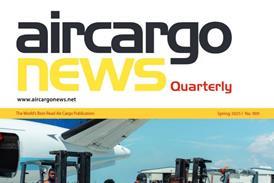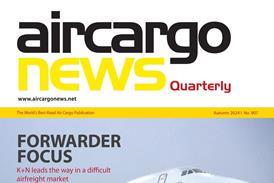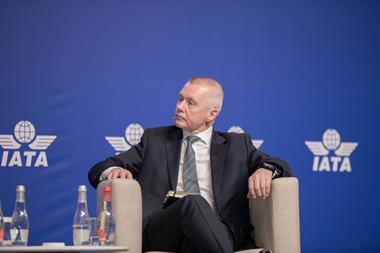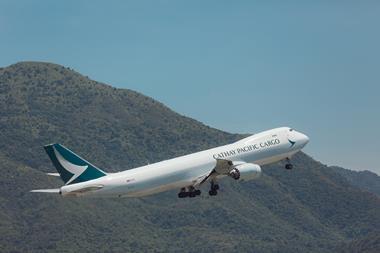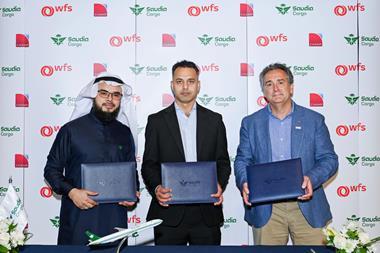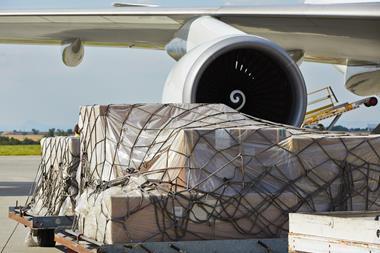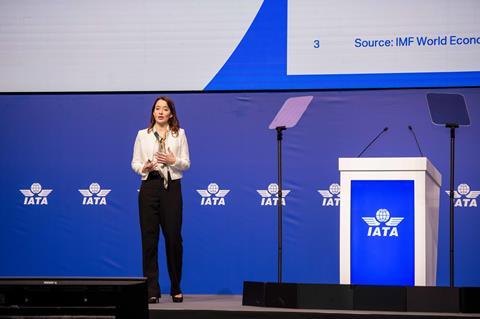
IATA is maintaining a positive air cargo forecast and has stressed the majority of global trade is currently unaffected by the latest emerging tariff war.
The US only accounts for 13% of global imports and potentially redirected trade flows as a result of tariffs could create new markets, pointed out IATA’s senior economist policy analysis Maja Marciniak, during the IATA World Cargo Symposium (WCS).
Speaking during the Sustainability and Economic Outlook session, Marciniak said: “87% of global trade is unaffected by tariffs. There are opportunities for new markets.”
Highlighting the scope of this opportunity, Marciniak said: “72.5m tonnes of freight are forecast to be handled by air in 2025.”
Looking at the current air cargo landscape, she said air cargo has slowed down in recent months, but this is not an alarming change.
“There has been some slowing down in the last few months, although a lot of that is related to seasonality and the slowing down of activity following the Christmas period.
“Of course, we also see a big drop in the actual values for February, but that is also very much dependant on the fact that February is a shorter month so that’s not something we should focus on too much.”
Speaking about the outlook for air cargo, she said that overall, IATA expected a 6% growth in global cargo tonne-kilometres (CTKs).
Growth is strong across all regions, with the Middle East expected to top the regions at 7.5% this year, although the risks to growth have increased.
Yields are also in a stable position and in 2024 increased over 2019, but figures should be viewed in the context of inflation, Marciniak said.
“It seems like a solid increase,” but, she added: “We do have to remember that we have been through a phase of really high inflation.
“So while the yields have grown by 38% cumulatively over this period, the growth in terms of the inflation that we saw in parallel was around 33% cumulatively.
“So yes, the yields have outpaced inflation, but it’s not that the yields have grown 40% on their own.”
Growth in yields and CTKs is promising for revenue, which is predicted by IATA to grow at 5.4% year on year.
Following the post-pandemic high, revenue growth trailed off, but there has actually been growth since 2023 that has resulted in higher revenue than in 2019, IATA’s data shows.
But Marciniak pointed out that part of the higher revenue will have to be directed towards efforts to achieve net zero emissions by 2050.
Positive economic signs
There are some key positive economic indicators for air cargo, added Marciniak.
While there are large regional variations in economic growth, Asia and developing markets are leading GDP growth, supported by verticals such as e-commerce.
Low employment levels are key to more spending power per person, fuelling consumption and therefore air cargo demand.
Meanwhile, jet fuel prices, which peaked in 2022 driven by the Russia-Ukraine war, have also decreased and this helps lower operational costs. However, there is high volatility in fuel prices.
Plus, globalisation has increased cross-regional demand, upping the distances that air cargo shipments need to travel.
However, major risks to air cargo growth include geopolitical tensions and a global trade war and these risks are higher than what they were six months ago, emphasised Marciniak.
Uncertainty has resulted in businesses becoming more cautious and slowing down their activities and there will likely be some direct impacts of tariffs on air cargo, she said.
“No matter where we end up with the tariffs and what actually gets introduced and passed through, there will already be some slowing down impact as businesses just sit back and wait for a moment figuring out what their next step should be.
“It’s not only that we are looking at high tariffs, but we’re also looking at a high percentage of goods being subject to tariffs.”
Marciniak added: “The air cargo industry will definitely see some direct impacts.”
These could include a reduction in trade flows due to price increases, changes to trade flows, customs processing delays, or an increase in aircraft prices that impacts financial performance.



